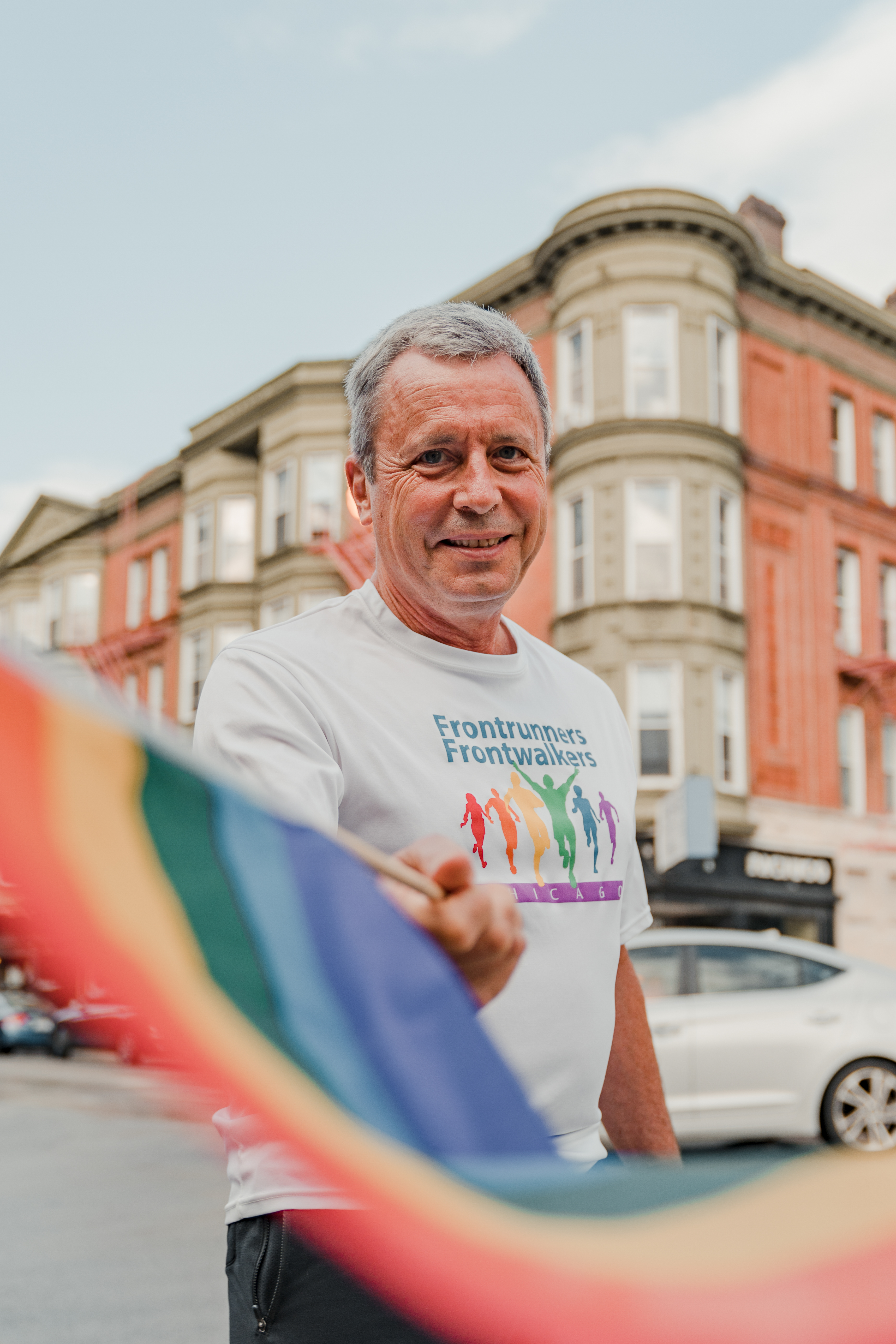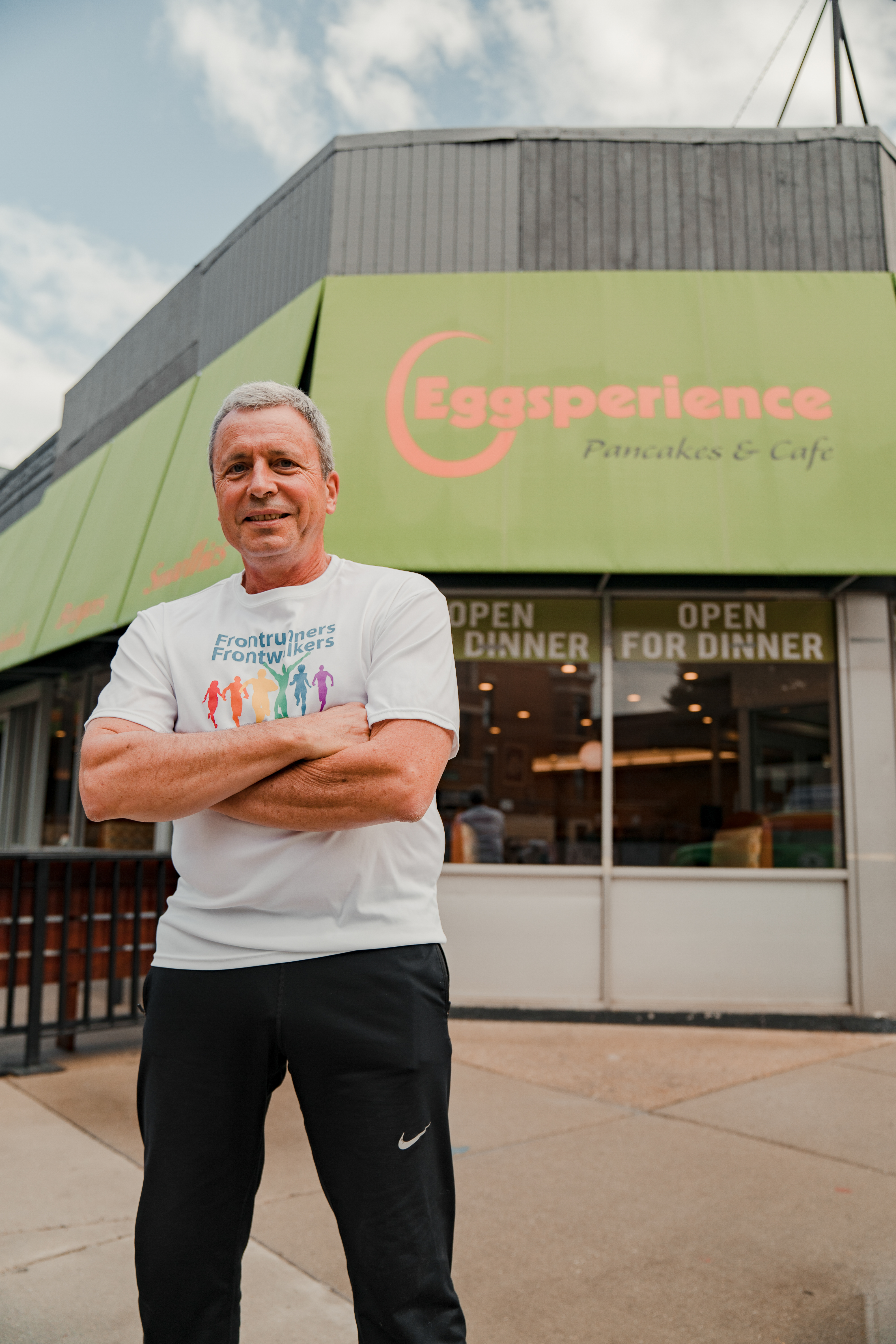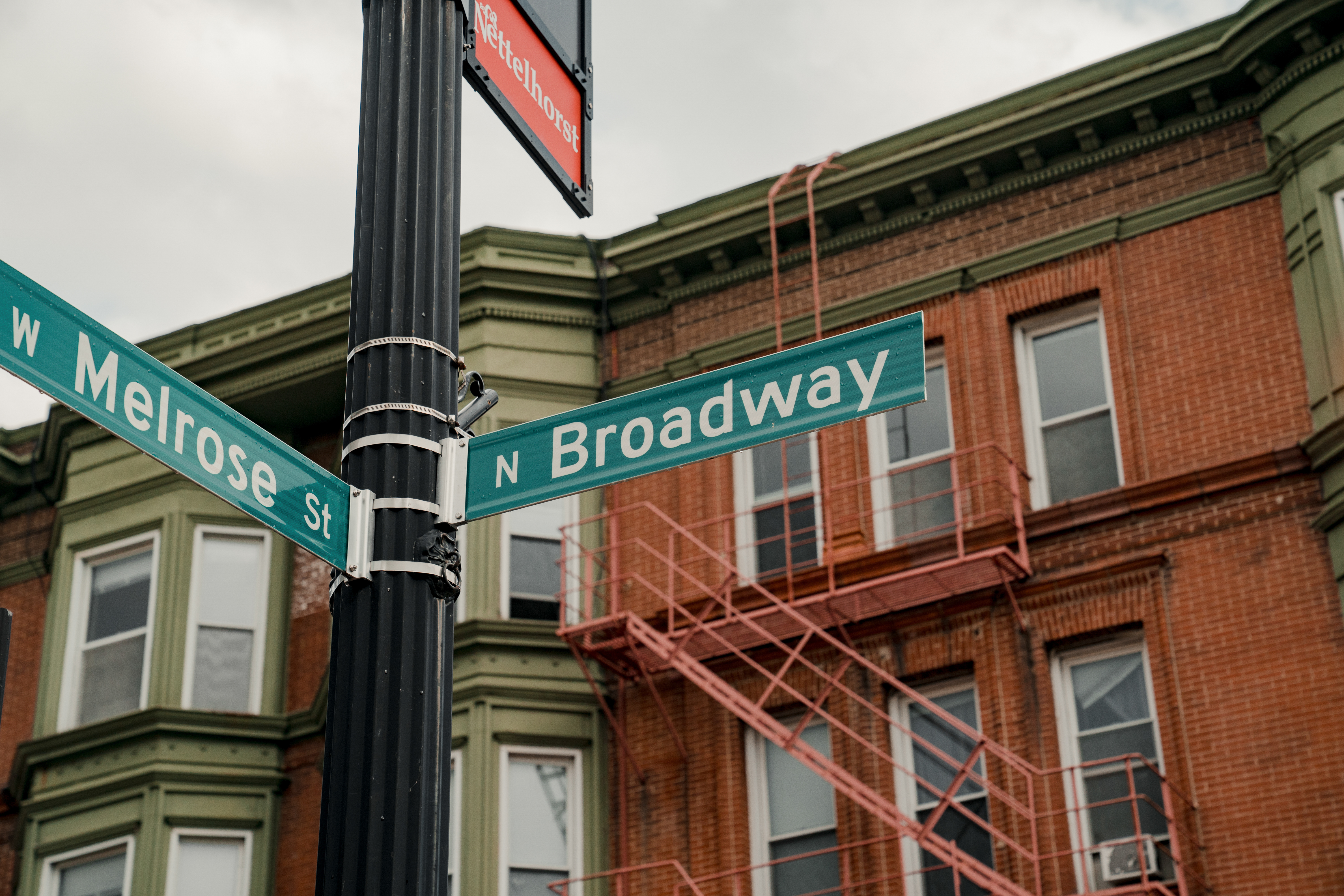CELEBRATE THE RUN - DAY 2 - MILE 9: David Reithoffer from LGBTQ+ Group Frontrunners on How His Chicago Marathon Cheer Station Started and Why It's the Best Part of the Course

CELEBRATE THE RUN - DAY 2 - MILE 9 tells the story of Boystown, now, Northalsted, and the Chicago Marathon aid station and cheer station at Broadway & Melrose - led by Frontrunners Chicago, the city’s LGBTQ+ running and walking group as told by former president and board member Dave Reithoffer.
The area welcomes runners with the fifth course aid station on race day, but the energy is conducted through the cheerleaders—volunteers of the Frontrunners who don matching skirts, shake pom-poms and dance to the beat of a DJ.
We talked to Frontrunner former president and French liaison of the Chicago Marathon David Reithoffer on the importance of creating a gay run club in the late 80’s, how it’s changed to be more inclusive, and why he thinks the community supports the runners the way they do.
How did you first get involved with Frontrunners?
When I joined the club in 1989, one morning someone said we're going to volunteer for a race and we're going to do a water station. Show up Sunday morning at six o'clock. And I had no idea what it was all about, but I showed up and it was for the Chicago Marathon at the time.
Were the Frontrunners already an established group at the time?
The first year for Frontrunners, I believe was 1988, and I joined in 1989.
What has been your highest involvement with Frontrunners?
I've been president of Frontrunners a couple of times over the years.

You mentioned you've never been a runner. How did you end up joining a running-based group?
Yes. The way I got into the club was socially. A friend of mine said, “Hey, I'm going to a party Saturday night, do you want to come with me” and I said, “yeah.” It was a Frontrunners house party. There were probably 15 guys there. They were just the nicest guys in the world. Just great guys. So I said, “Hey, do you have another invitation like that? Invite me.” I said to the president, “I'm not much of a runner because of my back, but you guys are so nice, can I just join you and walk?” He said, “of course you can. You're welcome. Anyone is welcome.”
Was it hard to find other LGBTQ+ runners at that time?
Yeah. Yeah, it was, The whole reason that we had what we used to call gay organizations, now called, LGBTQ+ organizations, is because we had nowhere to go. You couldn't feel comfortable being open in other running groups around Chicago, or, anywhere.
In the late 1980s, it was kind of hard to just hold another guy's hand in public. That’s why all these gay organizations were started. The gay running clubs, the gay bowling clubs, the gay swim clubs. Now people say, “well, we don't really need these organizations anymore” because now we can be open and everything but, there’s still a kind of a camaraderie feeling for sure.
You mentioned when you joined Frontrunners, it was a group of all guys. When did that change?
As guys, we recognized there are a lot of women out there who are lesbians and it's a shame not to have them in the club as well. And over the years we've worked hard to be more inclusive.

How are you involved in the LGBTQ+ community today?
I'm the captain of the Frontrunners aid station at the Bank of America Chicago Marathon. That has been pretty high profile for me because the whole running community and the neighborhood know what's going on. Frontrunners also produce the Proud to Run, an annual charity race. It's always on pride weekend and over the years I've been involved in that. I was the emcee.
What does the Frontrunners group provide for Chicago?
A very comfortable, nonthreatening place to go run or walk, or just hang out, go to dinner with people who you have something automatically in common.
The Frontrunners cheer station in Lakeview is a section of the course that people look forward to the most and remember. Why do you think that is?
Clearly, it is the most energized part of the course for the runners. You can just see the smiles on their faces when they hit the aid station. I set it up so the runners can go right up to the stage and take a selfie with the dancers and they love it.
Who makes up the cheer station?
It’s slowly grown over the years. It's all volunteers. It's all club members. But now I have to reach out to other people.
How did the cheer station start?
We were volunteering for the AIDS walk back in the early nineties. We had a new young guy in the club and he showed up at our tiny little water table and he just kind of spontaneously started doing cheerleader type things. I went up to him and I said, “Hey if I give you a $50 budget, could you get some skirts and do something on the morning of the marathon for us? And he goes, “Yeah, sure! That would be great!” That's how the cheerleaders were born.

Waking up at the crack of a Sunday isn't necessarily the most fun thing to do. Why do you think your cheer volunteers support runners so much?
It has gotten easier over the years to get a lot of people to show up and not complain at all because they're so invested in this event. It's partly a combination of being part of the Chicago Marathon because nowadays that's a big deal. Everybody knows somebody who's running for the marathon. But in our case, it's also the pride of being a part of this water station. People know that it’s the coolest spot on the course.
You speak French and are the liaison for the Bank of America Chicago Marathon to help bring in Paris athletes of all levels from France to the Chicago Marathon. Talk to me a bit about how you got started with that and your relationship with the French language.
I was a French major in school and never really did anything with it. One year I hosted a French choir here in Chicago, who was the university choir that I had sung with over in France and they needed housing. I asked Carey Pinkowski, the race director if he would house two choir people and he did. He heard me speak French with all these French people. He came up to me and said “I didn't know, you speak French.. we would love to get more Europeans coming to Chicago.” This was 1995. And he said, “how about we send you to the Paris Marathon next year, to do a Chicago Marathon booth at the Paris Marathon.”

Connect With Us
see the latest from Fleet Feet Chicago